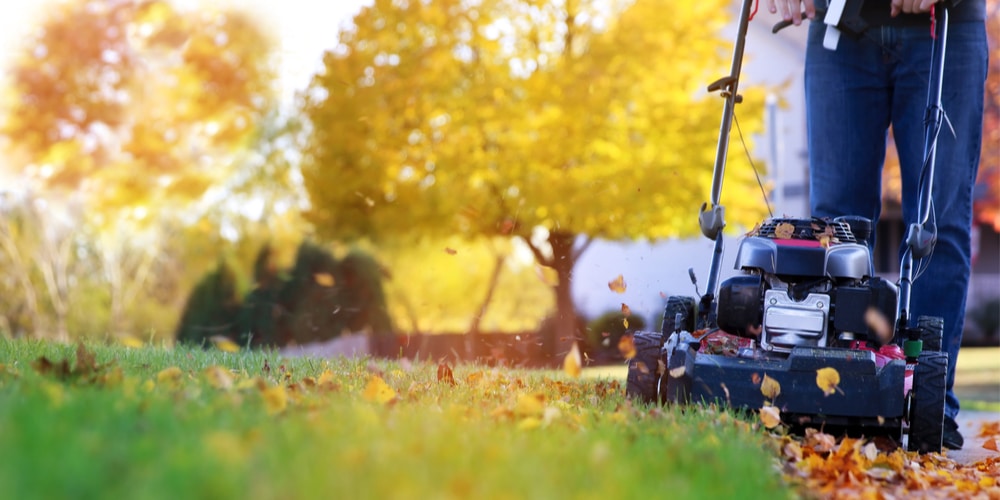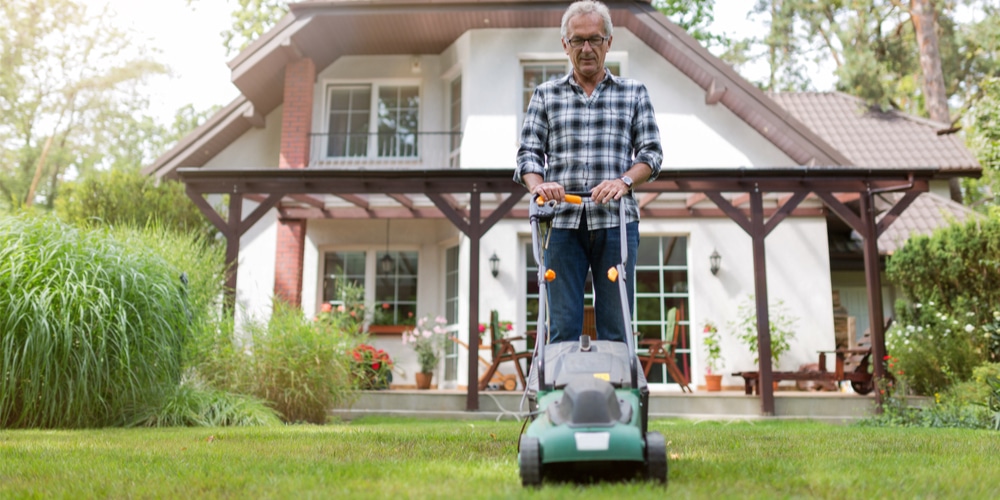If you have a lawn, you must be familiar with the effort in maintaining it healthy. Watering is only part of the story. You’ll need to feed it with extra nutrition to ensure it gets all it needs to thrive.
And don’t forget to keep an eye out for pests and diseases that might affect its growth patterns and ruin your lawn’s aesthetic appeal. Also, you will have to keep weeds at bay.
But above all, if you want to maintain lush, brilliant green grass on your property, you’ll have to commit to regular mowing.
But can you mow in light rain? After all, if you live somewhere with abundant rainfall, you might not always have the perfect conditions to cut your lawn.
Also, rain might make your grass grow faster, meaning you will have to increase how often you mow your grass. Or will you? You will learn this (and much more) by reading this essential guide we put together for you.
Mowing in the Rain: All You Should Know

Mowing has a couple of unwritten rules you should follow to keep your lawn healthy. For instance, you should avoid mowing wet grass. But what if you live somewhere where it rains a lot?
Mowing wet lawn results in uneven cuts and might leave grass clumps: when the rain is heavy, your lawn blades won’t stand up straight like they usually do, making it harder for your mower to “catch” them. You might end up with unattractive bare spots that you will have to fill in once the rainy season is over.
And your equipment might damage the turf: under soggy conditions, it might sink and cause ruts in the lawn. Mowers are heavy machines that you shouldn’t use on the muddy ground: the wheels might compact saturated soil and damage the roots of your grass.
But also, the opposite is true: water might cause your grass to become heavier, which can damage your mower’s engine. Tall wet grass can overheat your mower, but the effects will depend on the product you have at hand. Powerful ones tend to have a higher tolerance to moist conditions.
So, even if it only rains a little, we recommend against mowing in the rain. And we haven’t mentioned the safety hazard of doing it. Cutting the grass in wet conditions increases the chance of accidents: you are more likely to slip or fall under such circumstances.
And that could be especially harmful when you are working next to a tool with spinning blades. And let’s not mention that using a mower that needs electricity can be very dangerous in the rain.
But what can you do to keep your lawn healthy even during a wet season? Skip to the next section to find out!
Can you Mow in Light Rain? Our Tips
Ideally, you should let the grass dry for at least one day before cutting it. As a rule of thumb, mow it once you can walk through it without getting your shoes wet. But that’s not always possible, especially in the wetter parts of the country.
Our best tip to mow your grass in light rain (and do it correctly without damaging your lawn) is to invest in a high-quality mower. Also, keep the blades sharp to prevent causing more harm than good to your grass. Your mower must have enough power to spread grass blades (even when wet and tougher to slice).
Don’t forget that fungi thrive in wet environments: mowing a lawn under such conditions might contribute to the spread of diseases such as Brown Patches.
So make sure you clean up the clippings left on your turf after cutting it: grass becomes more susceptible to fungal infections if you mow your grass when wet. And leaving them there might cause them to grow mold, which might spread the condition around your lawn.
Don’t forget to clean the underside of the mower deck once you finish: you might be infecting your turf the next time you mow it. Also, wet grass on your machine might damage it.
Don’t forget to test the soil’s saturation before mowing it: you shouldn’t be able to see water rising around the edges of your shoes when standing on your lawn. Also, avoid cutting your grass blades shorter than three to four inches long.
Related Article: Best Mower For Wet Grass
